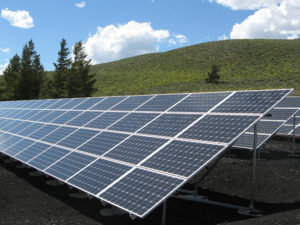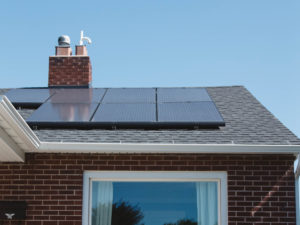Develop Microgrid Energy
Microgrids are self-contained power grids that are autonomous of a large central grid. They could be defined as little islands that are 100% reliable on their own power generation. Most microgrids are created with a combination of energy storage, renewable sources, and smart technology to balance supply and demand. Since microgrids are essentially localized, distributed energy generation sites, they are much more resilient and reliable than centralized energy systems that exist in most places, including Duluth.
In Duluth, most energy is supplied by Minnesota Power, which uses large power plants, to generate most of its electricity. Learn more about how Minnesota Power generates its electricity here. This means that Minnesota Power’s system of electric generation is more vulnerable if one power plant is temporarily shut down due to severe weather events, more prone to energy loss due to the electricity traveling far distances through long transmission lines, and less able to store electricity, as Minnesota Power currently has no large energy storage facility.
The adoption of microgrids throughout the city could reduce these specific problems that coincide with centralized energy systems like Minnesota Power’s model for Duluth. Microgrids could also be considered for communities, office parks, and large buildings.
While not a microgrid, the St. Louis County Government Building uses a water source heat recovery type variable refrigerant flow (VRF) system which enables each floor to operate separately. This essentially allows the county to go “off-grid” when one floor can heat or cool another.
Several universities are beginning to use microgrid technology too. St. Thomas University in St. Paul uses a microgrid, fueled by biodiesel, solar, and wind, for power generation and research. Solar arrays, both community owned, individually owned, and institutionally owned, are important steps in replacing our centralized energy system with microgrids. Several institutions and organizations within Duluth have installed solar arrays, such as the University of Minnesota Duluth which has campus solar arrays on several buildings, the Duluth Public Library, which boasts the first ever solar installation in the city, and Ecolibrium3’s Lincoln Park Solar Garden, which is Duluth’s first community-owned, low-income solar project.
Individuals can also be a part of transitioning Duluth from a centralized grid system to a localized, decentralized microgrid system, by installing solar at their own homes, participating in a group solar buy or a community solar garden. Learn more about how you can be a part of the microgrid future by visiting the Duluth Citizen Climate Action Plan’s energy production actions page and learn how to add renewables and solar, join a solar group buy and join a community solar garden.
Did you take this action? Report it!
Help us show our collective community impact by reporting that you took this action.

